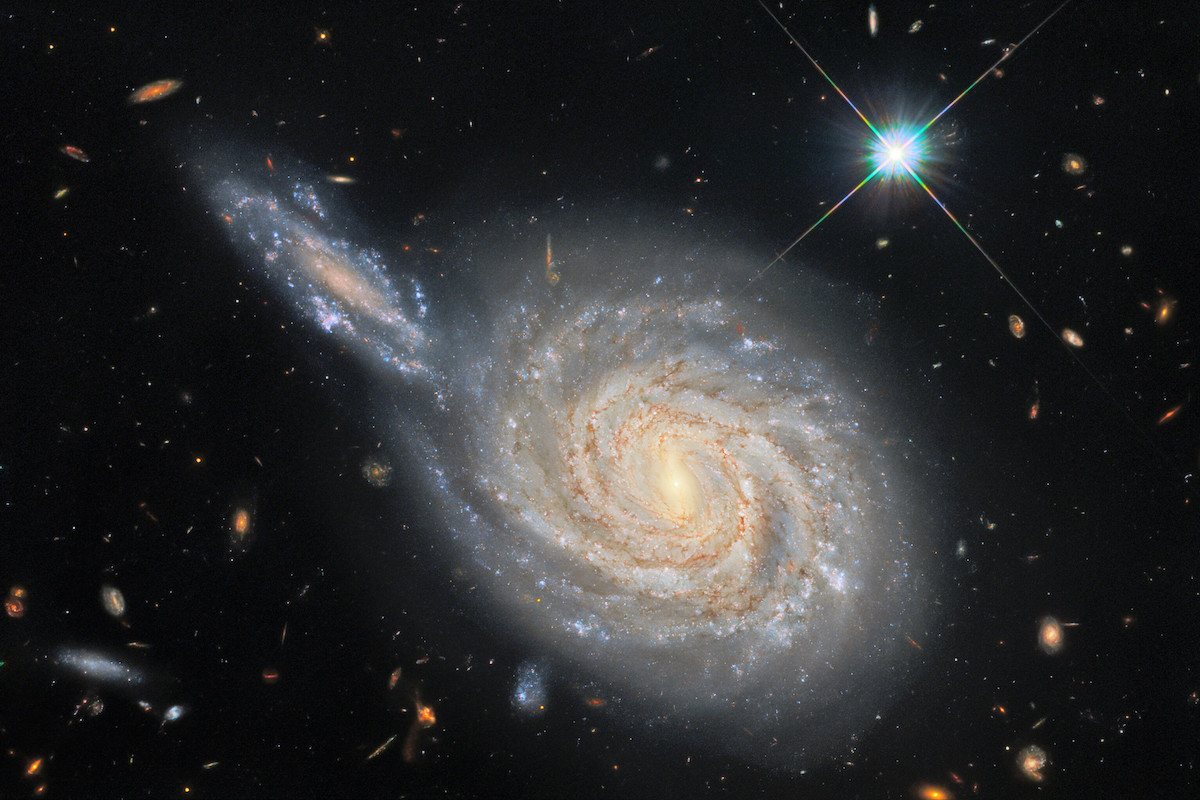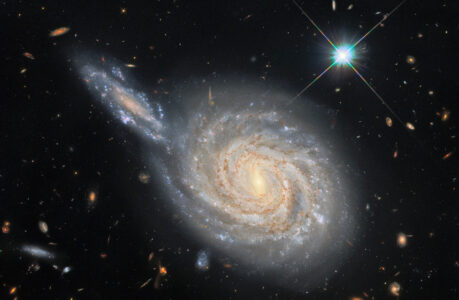The Pisces constellation is one of the largest and most prominent constellations in the sky. It is known for its distinctive “V” shape, which is made up of two fish swimming in opposite directions. This beautiful star pattern is visible from many parts of the world, including Ireland, where it can be seen throughout the year.
In this article, we’ll take a closer look at the Pisces constellation, including its history, mythology, and the best times and locations to view it from Ireland.
History and Mythology of Pisces Constellation
The Pisces constellation has been known to humans for thousands of years. In ancient Babylonian astronomy, it was associated with the goddess Anunitum and represented the god Ea’s fish. In Greek mythology, the two fish that make up the constellation represent the goddess Aphrodite and her son Eros. The fish are said to have helped the goddess and her son escape from the monster Typhon by jumping into the Euphrates River.
In Hindu mythology, the Pisces constellation represents Matsya, the first avatar of the god Vishnu. In this story, Matsya takes the form of a fish to rescue the first man, Manu, from a great flood.
Best Time and Location to View Pisces Constellation from Ireland
The best time to view the Pisces constellation from Ireland is during the winter months, from November to February. During this time, the constellation is at its highest point in the sky and is visible for most of the night.
To view the Pisces constellation, it is best to find a dark location away from city lights. You should also wait until after midnight when the constellation is at its highest point in the sky. If you have a telescope or binoculars, you may be able to see more detail in the constellation, including individual stars and star clusters.
Interesting Facts about Pisces Constellation
- The Pisces constellation is one of the largest constellations in the sky and is made up of 21 stars.
- The brightest star in the constellation is Eta Piscium, which is a yellow giant star located about 294 light-years from Earth.
- The Pisces constellation is part of the zodiac and is the twelfth astrological sign, representing those born between February 19 and March 20.
- In addition to being a popular constellation for stargazers, Pisces is also used in scientific research. Astronomers have studied the constellation to better understand the evolution of galaxies and the expansion of the universe.
The Pisces constellation is a fascinating and beautiful star pattern in the night sky. Whether you are a seasoned stargazer or a beginner, taking the time to view this constellation from Ireland can be an unforgettable experience. By understanding the history and mythology behind this celestial wonder and choosing the right time and location to view it, you can appreciate the majesty of the Pisces constellation even more.
How can I see the constellation of pisces from Ireland?
To see the Pisces constellation from Ireland, you need to find a location with minimal light pollution, as this will enable you to see more stars in the sky. You can also check the weather forecast for clear skies to ensure optimal visibility.
The best time to view the Pisces constellation in Ireland is during the winter months from November to February. During this time, the constellation is at its highest point in the sky and is visible for most of the night.
To locate the Pisces constellation, look for a “V” shape in the night sky, which represents two fish swimming in opposite directions. The “V” shape is made up of several bright stars, including the brightest star in the constellation, Eta Piscium.
If you have a pair of binoculars or a telescope, you may be able to see more detail in the constellation, including individual stars and star clusters.
Remember, stargazing can take time and patience. It may take a few minutes for your eyes to adjust to the darkness, so try to avoid looking at bright lights, including phone screens, to help your eyes adjust faster. Additionally, be sure to dress warmly, as stargazing can be a cold activity, especially during the winter months.
The mythology of the constellation of pisces
The mythology of the Pisces constellation dates back thousands of years and has been a part of various cultures and civilizations. In Greek mythology, the Pisces constellation is associated with the goddess Aphrodite and her son Eros, who were both transformed into fish and escaped from the monster Typhon by jumping into the Euphrates River. The two fish that make up the constellation are said to represent Aphrodite and Eros.
In Babylonian astronomy, the constellation was associated with the goddess Anunitum and represented the god Ea’s fish. The ancient Babylonians believed that the constellation had a strong influence on the harvest, and it was often used in their astrological predictions.
In Hindu mythology, the Pisces constellation represents Matsya, the first avatar of the god Vishnu. According to the Hindu myth, Matsya takes the form of a fish to rescue the first man, Manu, from a great flood. In this story, Manu is instructed to build a boat and take along with him a pair of all living creatures. Matsya appears to Manu in the form of a fish and guides him to safety, thus saving all living beings.
The Pisces constellation is also associated with the astrological sign of the same name, which represents those born between February 19 and March 20. In astrology, Pisces is said to be a water sign, representing emotions, creativity, and intuition. People born under this sign are said to be compassionate, imaginative, and sensitive.
Overall, the Pisces constellation has been an important part of various mythologies and cultures throughout history, representing different things to different people.
The Stars in the constellation of pisces
The Pisces constellation is a large and prominent constellation in the night sky, located in the northern celestial hemisphere. It is one of the twelve constellations of the zodiac and is composed of several stars, including both bright and faint ones. Here are some of the most notable stars in the Pisces constellation:
- Eta Piscium: Eta Piscium is the brightest star in the Pisces constellation, with a visual magnitude of 3.6. It is a yellow giant star located about 294 light-years from Earth.
- Alrescha (Alpha Piscium): Alrescha is the second brightest star in the constellation, with a visual magnitude of 3.8. It is a binary star system composed of two stars located about 139 light-years from Earth.
- Revati (Zeta Piscium): Revati is a binary star system located about 154 light-years from Earth. It is composed of two stars with a combined visual magnitude of 5.2.
- Epsilon Piscium: Epsilon Piscium is a binary star system located about 332 light-years from Earth. It is composed of two stars with a combined visual magnitude of 4.3.
- Delta Piscium: Delta Piscium is a binary star system located about 305 light-years from Earth. It is composed of two stars with a combined visual magnitude of 4.4.
- Kullat Nunu (Pi Piscium): Kullat Nunu is a binary star system located about 195 light-years from Earth. It is composed of two stars with a combined visual magnitude of 4.7.
- Torcularis Septentrionalis (Omicron Piscium): Torcularis Septentrionalis is a binary star system located about 113 light-years from Earth. It is composed of two stars with a combined visual magnitude of 4.3.
In addition to these stars, the Pisces constellation also contains several star clusters and galaxies, including the Pisces Cluster, a group of galaxies located about 240 million light-years from Earth.
Deep sky objects visible in the Constellation of pisces
The Pisces constellation contains several deep sky objects that can be seen by stargazers with a telescope or binoculars. Here are some of the notable deep sky objects in the constellation of Pisces:
M74 (NGC 628) is a spiral galaxy located about 32 million light-years from Earth. It is one of the faintest objects in the Messier catalog and is known for its tightly wound spiral arms.
NGC 7662 also known as the Blue Snowball Nebula, is a planetary nebula located about 1,800 light-years from Earth. It is named for its blue color and spherical shape, which is created by a dying star shedding its outer layers.
NGC 488 is a spiral galaxy located about 90 million light-years from Earth. It is a member of the Pisces-Perseus Supercluster of galaxies and is notable for its bright nucleus and spiral arms.
NGC 520 is a pair of interacting galaxies located about 100 million light-years from Earth. It is believed that the two galaxies are in the process of merging, creating a new, larger galaxy.
NGC 1097 is a barred spiral galaxy located about 47 million light-years from Earth. It is notable for its bright nucleus and tightly wound spiral arms.
Stephan’s Quintet is a group of five galaxies located about 290 million light-years from Earth. It is named after French astronomer Édouard Stephan, who discovered the group in 1877.

